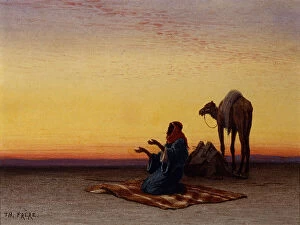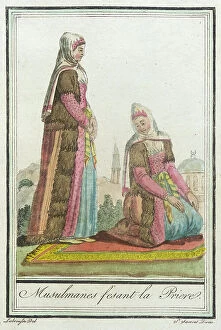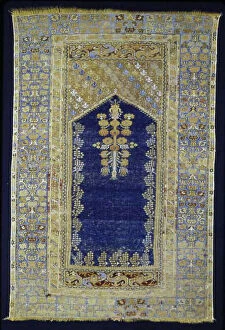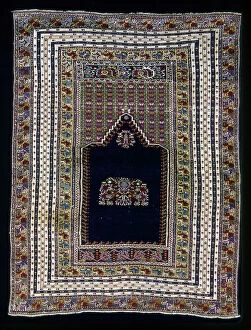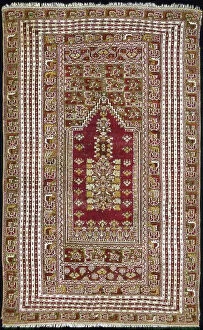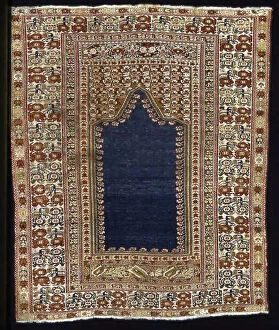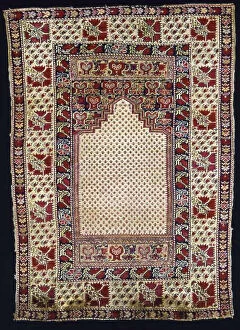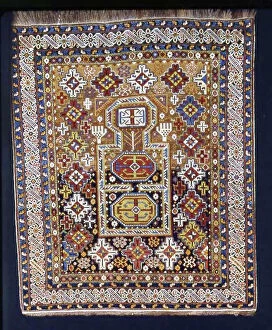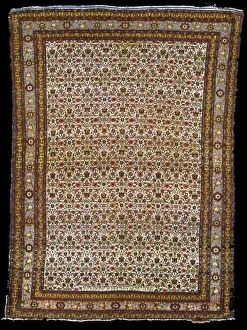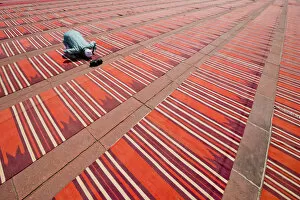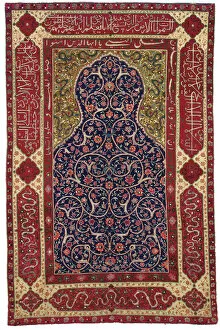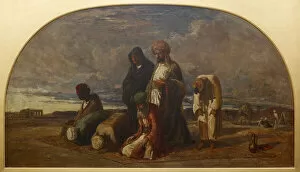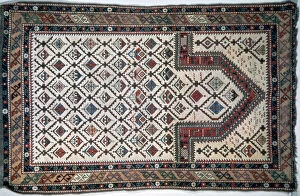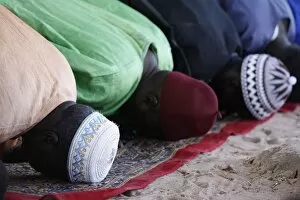Prayer Rug Collection
A prayer rug, a sacred artifact that holds deep cultural and religious significance, is more than just a piece of fabric, and is a symbol of devotion and spirituality
For sale as Licensed Images
Choose your image, Select your licence and Download the media
A prayer rug, a sacred artifact that holds deep cultural and religious significance, is more than just a piece of fabric, and is a symbol of devotion and spirituality, connecting individuals to their faith in the most intimate way. One such example is the Pichwai Art, where an Indian man can be seen praying on prayer rugs at Jama Masjid in Old Delhi. The vibrant colors and intricate patterns depict not only his dedication but also the rich heritage of India. Traveling back in time to the 19th century, we come across a Prayer Carpet from India whose creator remains unknown. This masterpiece showcases exquisite craftsmanship with its detailed motifs and delicate weaving techniques. In "Morning Prayers, " an oil painting from 1902, we witness the serene act of worship depicted on canvas. The artist captures the tranquility and devotion as individuals kneel upon their prayer rugs, seeking solace through their connection with a higher power. Moving eastward to Central Persia, we encounter The Perez Topkapi prayer rug from Isfahan. Its intricate design reflects centuries-old traditions passed down through generations. This rug serves as a testament to Persian artistry and craftsmanship. The Oushak Rug made from wool offers comfort underfoot while providing spiritual solace during prayers. Its soft texture adds warmth to any space it graces while reminding us of our divine connection. "Prayers in the Desert, " painted by William James Muller between 1840-1849, transports us to another realm altogether. Here we find ourselves immersed in nature's beauty as individuals seek solitude amidst vast sand dunes while kneeling on their prayer rugs - finding peace within themselves even amidst harsh surroundings. Antique Bokhara prayer rugs alongside Sarik Turkoman or Punjdeh prayer rugs take us into early twentieth-century Central Asia. These intricately woven pieces showcase regional designs unique to each culture while serving as tangible reminders of faith for those who kneel upon them.

